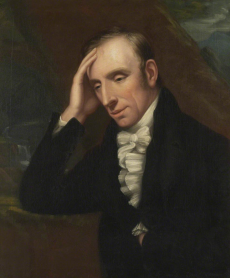
Email: reecejordan98@hotmail.co.uk
Total Article : 168
About Me:18-year-old sixth form student, studying English Literature, History and Government and Politics. My articles will broadly cover topics from the current affairs of politics to reviews of books and albums, as well as adding my own creative pieces, whether it be short fiction or general opinion.

Writing on Wordsworth’s and Coleridge’s Lyrical Ballads, Fiona Stafford has stated that it is a volume ‘in which nothing is quite as it seems’. Indeed, the poems within the collection seem to have a duality to them: their superficial elements, which chime with traditional forms and Romantic notions, and their deeper levels of uncertainty, their questioning of such forms. Using both ‘Lines written in early spring’ and ‘The Thorn as means of reference, this article seeks to illustrate how focusing on the shallower levels of Wordsworth’s work not only diminishes the reading experience of his poems, but also how it blinds us to the deeper, more doubtful elements of his poetry.
Wordsworth’s lyric, ‘Lines written in early spring’ is one such poem that is not ‘quite as it seems’. Superficially, it can be read as establishing a binary of humanity and nature. Such readings, like Patrick Campbell’s, point to the active harmony of nature: ‘I heard a thousand blended notes’ (l. 1) / ‘every flower/ Enjoys the air it breathes.’ (ll. 11-12) / ‘The birds around me hopp’d and play’d’ (l. 13). This is contrasted with the passivity of the narrator who ‘sate reclined’ (l. 2), and whose ‘sweet mood’ (l. 3) cannot exist in primal pleasure like nature’s but must bring on ‘sad thoughts’ (l. 5). Thus, the poem has the lamenting refrain ‘what man has made of man’ and leads Campbell to conclude: ‘All these manifestations of a joyous natural world responding to the promptings of another spring provoke in the reclusive poet … sad thoughts of a human world which should be happy but which is, alas, torn by strife.’
This is, no doubt, a valid reading of the poem, but it is one that is perhaps too superficial. It Is true that the speaker of the poem is lamenting a ‘human world’ which is ‘torn by strife’, but the main friction of the poem is whether nature can act as a solace, or antidote, to such strife or whether this in itself is a vain human construction. As Heather Glen states, central to the poem is ‘a disturbing doubt as to whether [nature] can ever be so assimilated’ into the human world. The aforementioned imagery of nature in joyful harmony is depicted as seeming, rather than actually existing, in such a way. The speaker relies on his ‘faith’ that ‘every flower / Enjoys the air it breathes’ (ll. 11-12) and that the motion of the birds ‘seem’d a thrill of pleasure’ (italics mine).
Image Credits: artuk.org

0 Comment:
Be the first one to comment on this article.